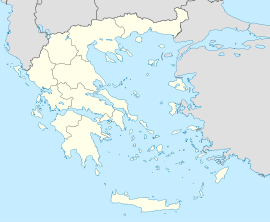The Battle of Salamis was a naval battle that took place in September 480 BC, in the straits of Salamis, between the island of Salamis and the mainland of Greece. As part of the second Persian invasion of Greece, the Persian fleet of 1,207 ships sought a decisive battle against the allied Greek fleet of 380 ships (“The Battle of Salamis”).
The trireme (Greek for “three-oarer”) was a type of warship used in the Mediterranean, consisting of three stacked rows of oars on each side of the ship. Evolving from the bireme (two rows of oars), the first triremes were likely from Phoenicia, though some earlier historians suggested it was introduced to Greece from Corinth. The trireme became the warship-of-choice in the Mediterranean area by the early 5th century (“Trireme”).
The trireme was a fast, agile ship. With 170 men rowing in synchronization, they could reach speeds of 9-10 nautical miles per hour (in a short burst of speed), or 5-8 at a normal or somewhat hurried pace. Unfortunately, these thin ships were not equipped for the harsh open waters, and were only useful in coastal seas (Strauss, xviii).

Depiction of a Greek trireme
Trireme design varied from area to area. The most historical documentation is on the Athenian trireme. These ships would have been approximately 130 feet long and 18 feet wide (39 feet wide when the oars were extended), and would have sat 8½ feet above the waterline. Weapons themselves, the ships featured a prow that would have been tipped with a large, bronze-encased ram that extended about 7 feet off the stem at the waterline. The Phoenician triremes (which made up approximately ¼ of the Persian fleet) were wider than the Athenian triremes, to hold more troops on the decks. The Phoenician ram would have been longer and more tapered than the Athenian counterpart (Strauss, xvii-xviii).
Triremes were ships of considerable size, and required a considerable amount of wood to build. Greece was mostly deforested by the sixth century, so they had to import their lumber for building ships. Other countries, like Egypt, also had this problem (Johnson, 199). As expected, those countries that contributed the most to the Persian fleet were those that had more available lumber, except Egypt, which was wealthy enough to import it (Johnson, 203).
The Persian fleet was made up of 1,207 ships of Persian-controlled nations. Herodotus lists that the Phoenicians provided 300 ships, the Egyptians provided 200, the Cyprians 150, the Cilicians 100, the Ionians 100, as well as six other countries providing various two-digit numbers of ships (Herodotus). Because the Persians were a land power, they felt uncomfortable in a sea-battle of merely ships. Instead of relying only on the abilities of the ships and their crews, they packed the ships with infantry and archers in order to try boarding enemy ships instead of sinking them. This was an additional 70 infantrymen and archers (30 Persian/Mede, the rest miscellaneous other troops) on each of the ships in the Persian fleet (Strauss, 132). Unfortunately, this was a futile strategy, because many ships in the Persian fleet were sunk before they could board the enemy ships. And more unfortunately, most of the Persian troops couldn’t swim.
Works Cited
Herodotus. The Histories of Herodotus: Book VII. Trans. George Rawlinson, 1942. Ed. Bruce J. Butterfield. ParsTimes.com. Web. 1 Feb. 2012. <http://www.parstimes.com/history/herodotus/persian_wars/polymnia.html>
Johnson, Allan Chester. “Ancient Forests and Navies.” Transactions and Proceedings of the American Philological Association 58 (1927): 199-209. Print.
Mitchell, F. Greek Trireme. 1984. <http://www.au.af.mil/au/awc/awcgate/gabrmetz/gabr0066.htm>
Strauss, Barry S. The Battle of Salamis: The Naval Encounter That Saved Greece – and Western Civilization. New York: Simon & Schuster, 2004. Print.
Wikipedia Contributors. “Trireme.” Wikipedia, The Free Encyclopedia. Wikipedia, The Free Encyclopedia, 23 Jan. 2012. Web. 1 Feb. 2012.
Wikipedia Contributors. “Battle of Salamis.” Wikipedia, The Free Encyclopedia. Wikipedia, The Free Encyclopedia, 1 Feb. 2012. Web. 1 Feb. 2012.











